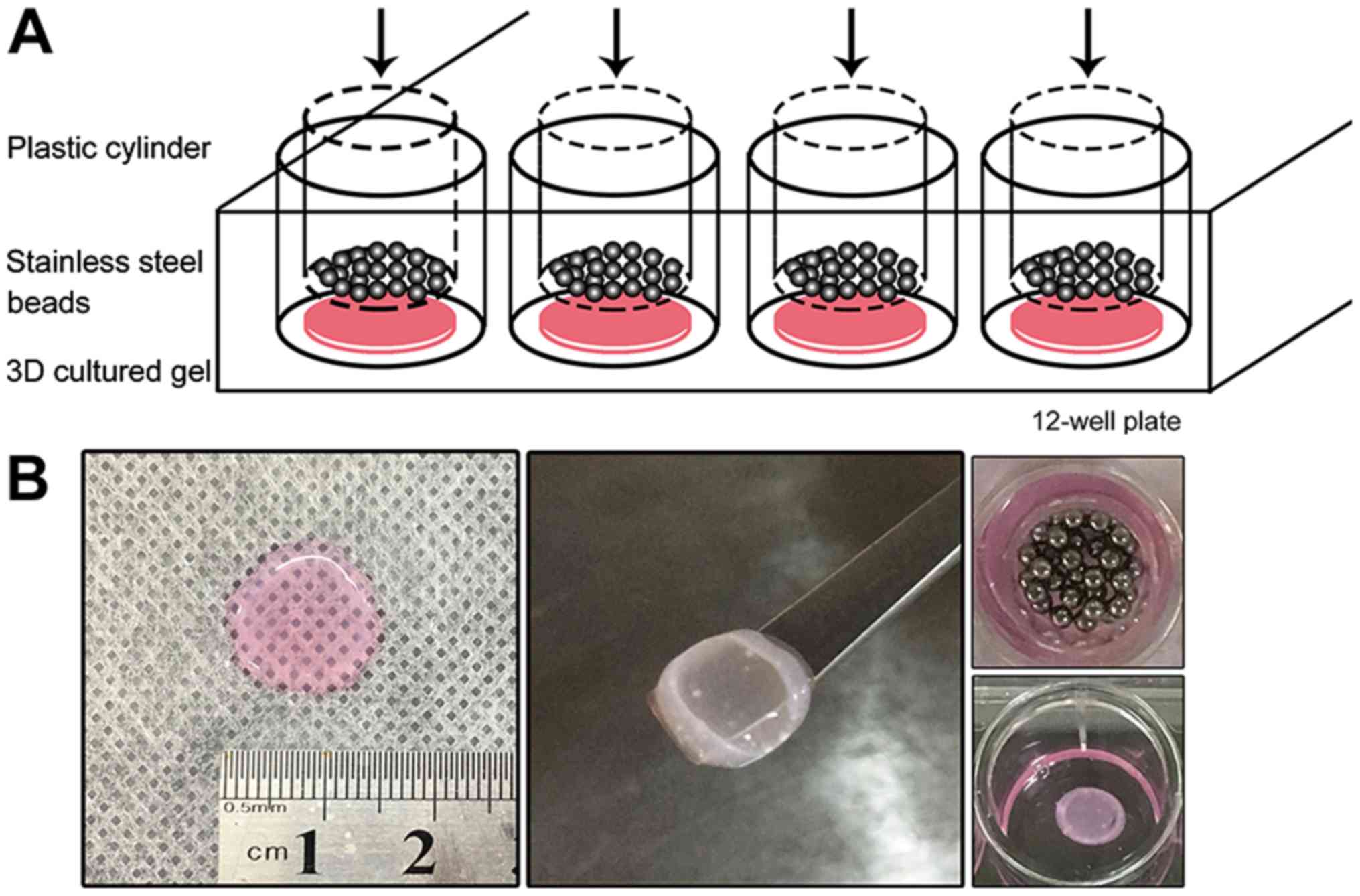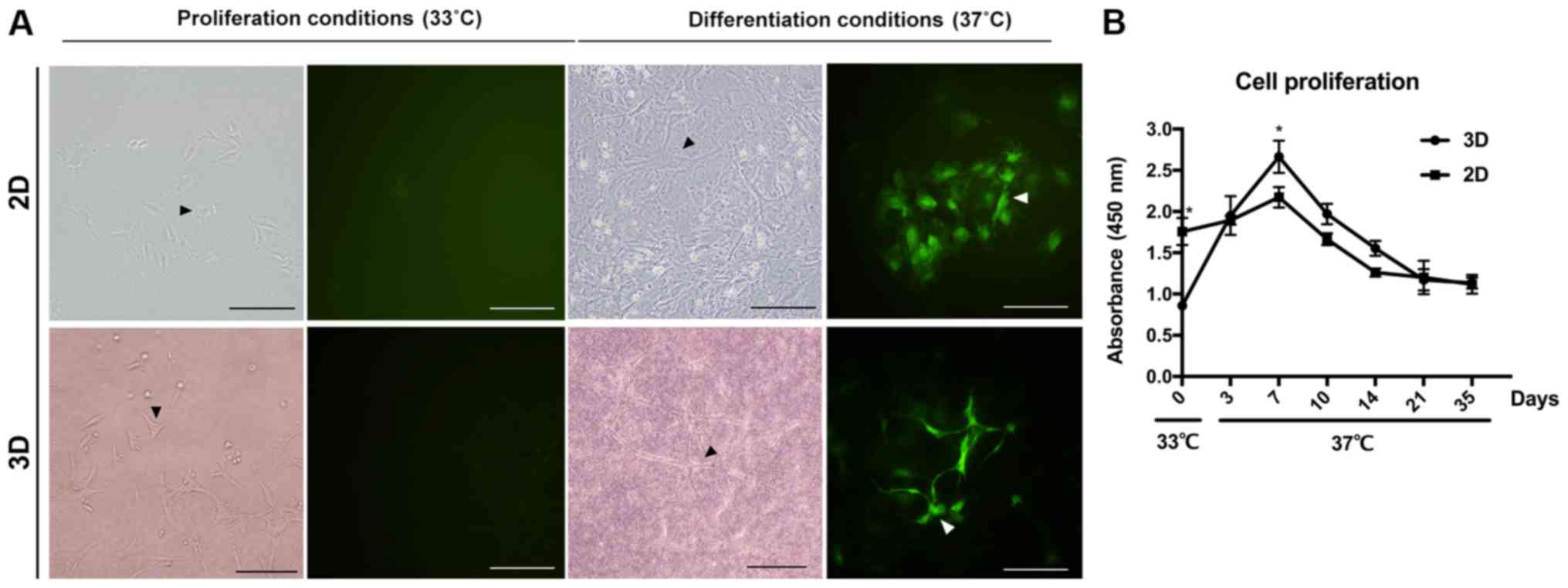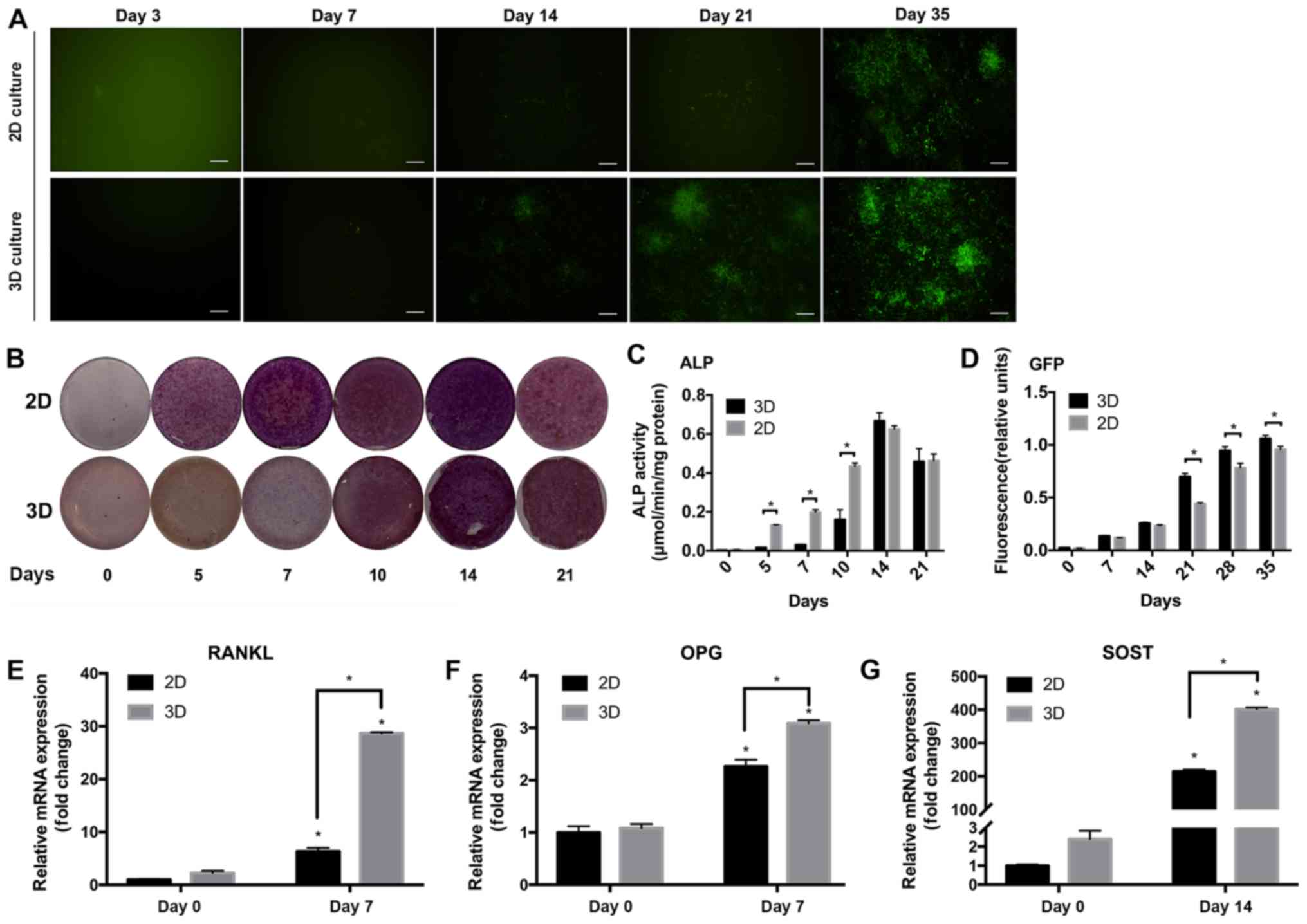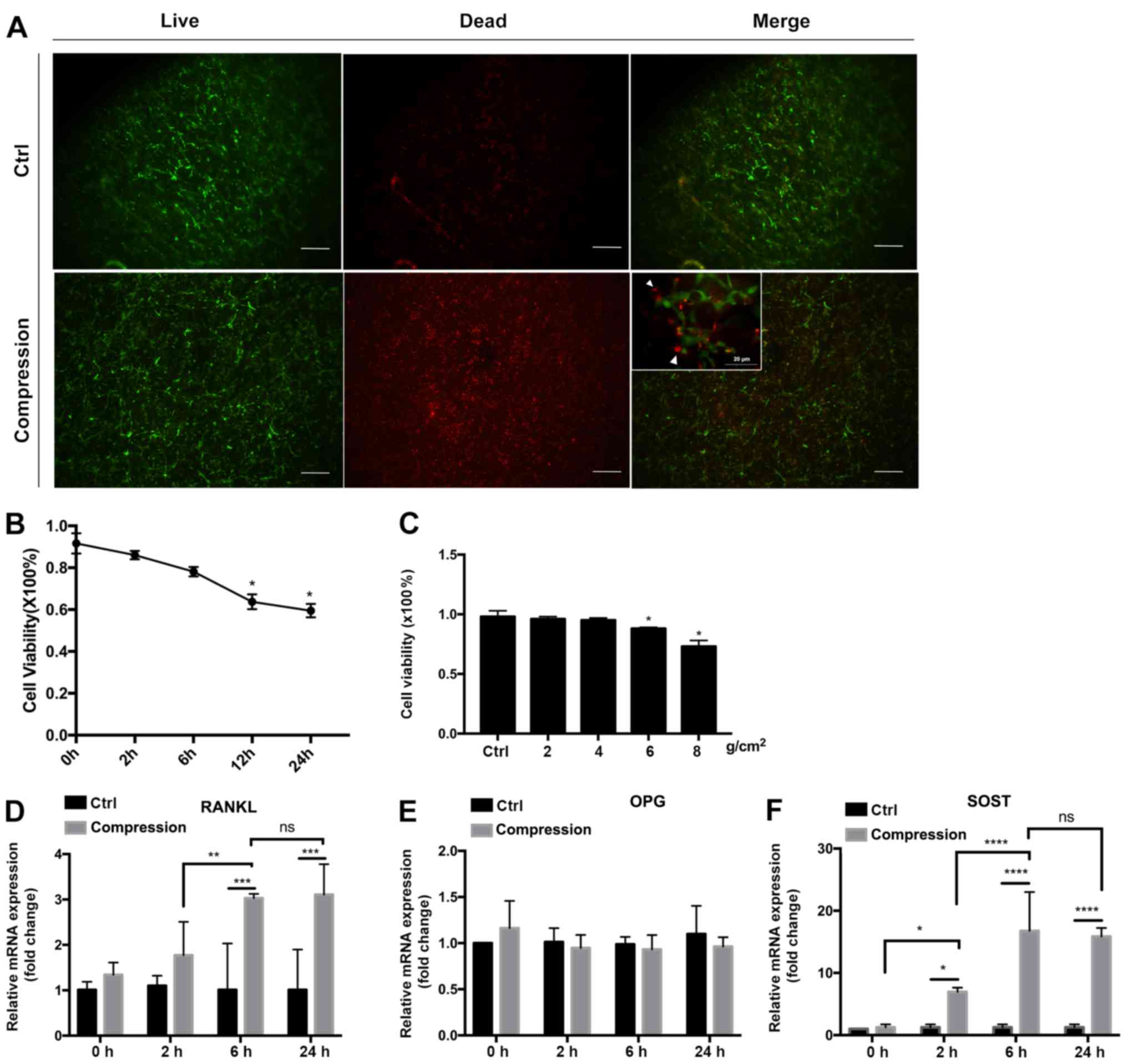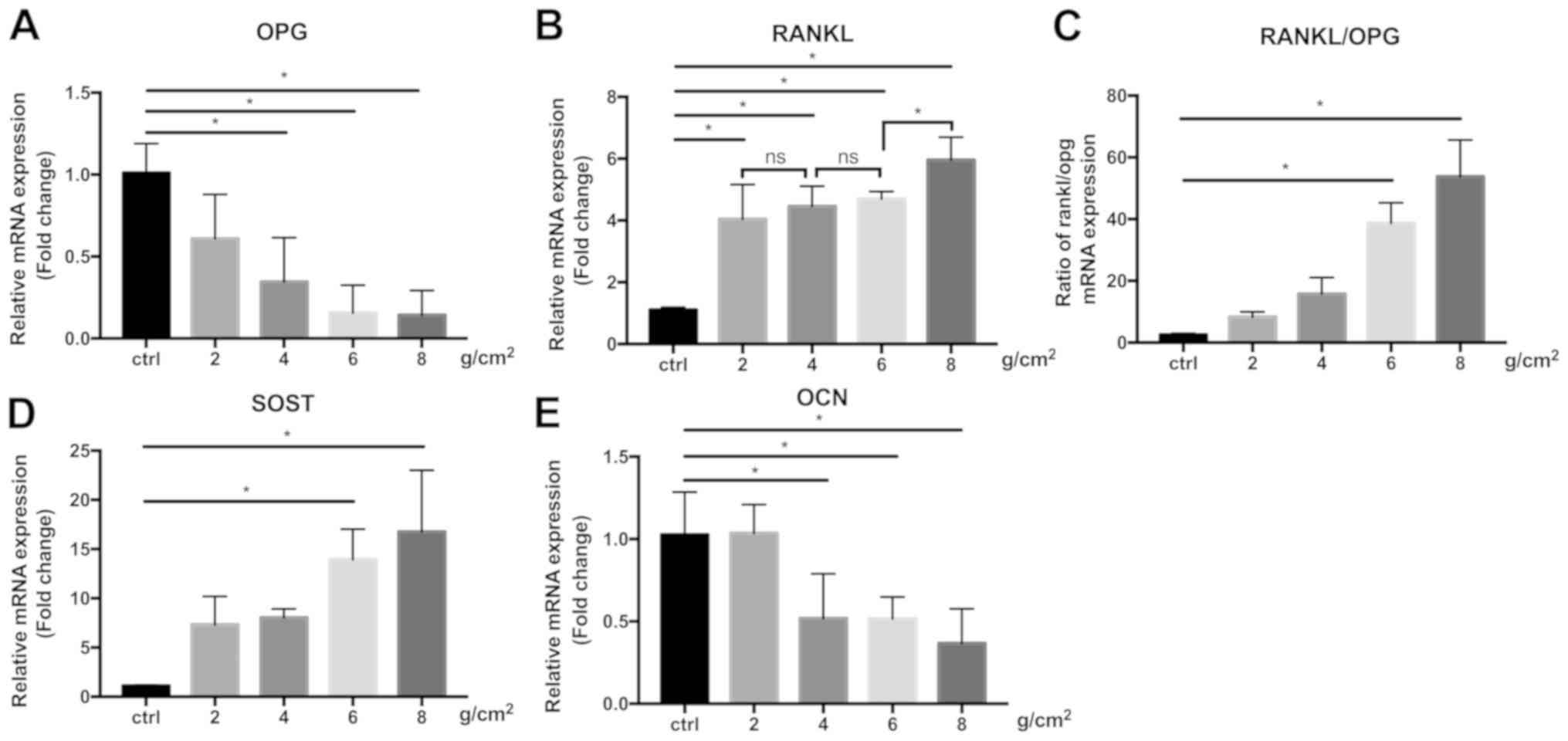|
1
|
Pitaru S, Pritzki A, Bar-Kana I, Grosskopf
A, Savion N and Narayanan AS: Bone morphogenetic protein 2 induces
the expression of cementum attachment protein in human periodontal
ligament clones. Connect Tissue Res. 43:257–264. 2002.PubMed/NCBI View Article : Google Scholar
|
|
2
|
Feller L, Khammissa G, Thomadakis G,
Fourie J and Lemmer J: Apical external root resorption and repair
in orthodontic tooth movement: Biological events. Biomed Res Int.
2016(4864195)2016.PubMed/NCBI View Article : Google Scholar
|
|
3
|
Walker SL, Tieu LD and Flores-Mir C:
Radiographic comparison of the extent of orthodontically induced
external apical root resorption in vital and root-filled teeth: A
systematic review. Eur J Orthod. 35:796–802. 2013.PubMed/NCBI View Article : Google Scholar
|
|
4
|
Brezniak N and Wasserstein A:
Orthodontically induced inflammatory root resorption Part I: The
basic science aspects. Angle Orthod. 72:175–179. 2002.PubMed/NCBI View Article : Google Scholar
|
|
5
|
Grzesik WJ, Kuzentsov SA, Uzawa K, Mankani
M, Robey PG and Yamauchi M: Normal human cementum-derived cells:
Isolation, clonal expansion, and in vitro and in vivo
characterization. J Bone Miner Res. 13:1547–1554. 1998.PubMed/NCBI View Article : Google Scholar
|
|
6
|
Zhao N, Nociti FH Jr, Duan P, Prideaux M,
Zhao H, Foster BL, Somerman MJ and Bonewald LF: Isolation and
functional analysis of an immortalized murine cementocyte cell
line, IDG-CM6. J Bone Miner Res. 31:430–442. 2016.PubMed/NCBI View Article : Google Scholar
|
|
7
|
Redlich M, Roos H, Reichenberg E, Zaks B,
Grosskop A, Bar Kana I, Pitaru S and Palmon A: The effect of
centrifugal force on mRNA levels of collagenase, collagen type-I,
tissue inhibitors of metalloproteinases and beta-actin in cultured
human periodontal ligament fibroblasts. J Periodontal Res.
39:27–32. 2004.PubMed/NCBI View Article : Google Scholar
|
|
8
|
Sun Q, Gu Y, Zhang W, Dziopa L, Zilberberg
J and Lee W: Ex vivo 3D osteocyte network construction with primary
murine bone cells. Bone Res. 3(15026)2015.PubMed/NCBI View Article : Google Scholar
|
|
9
|
Verbruggen SW, Vaughan TJ and McNamara LM:
Fluid flow in the osteocyte mechanical environment: A
fluid-structure interaction approach. Biomech Model Mechanobiol.
13:85–97. 2014.PubMed/NCBI View Article : Google Scholar
|
|
10
|
Li S, Li F, Zou S, Zhang L and Bai Y:
PTH1R signalling regulates the mechanotransduction process of
cementoblasts under cyclic tensile stress. Eur J Orthod.
40:537–543. 2018.PubMed/NCBI View Article : Google Scholar
|
|
11
|
Manokawinchoke J, Limjeerajarus N,
Limjeerajarus C, Sastravaha P, Everts V and Pavasant P: Mechanical
force-induced TGFB1 increases expression of SOST/POSTN by hPDL
cells. J Dent Res. 94:983–989. 2015.PubMed/NCBI View Article : Google Scholar
|
|
12
|
Nieponice A, Maul TM, Cumer JM, Soletti L
and Vorp DA: Mechanical stimulation induces morphological and
phenotypic changes in bone marrow-derived progenitor cells within a
three-dimensional fibrin matrix. J Biomed Mater Res A. 81:523–530.
2007.PubMed/NCBI View Article : Google Scholar
|
|
13
|
Atkins GJ, Welldon KJ, Holding CA, Haynes
DR, Howie DW and Findlay DM: The induction of a catabolic phenotype
in human primary osteoblasts and osteocytes by polyethylene
particles. Biomaterials. 30:3672–3681. 2009.PubMed/NCBI View Article : Google Scholar
|
|
14
|
Diercke K, König A, Kohl A, Lux CJ and
Erber R: Human primary cementoblasts respond to combined IL-1beta
stimulation and compression with an impaired BSP and CEMP-1
expression. Eur J Cell Biol. 91:402–412. 2012.PubMed/NCBI View Article : Google Scholar
|
|
15
|
Damaraju S, Matyas JR, Rancourt DE and
Duncan NA: The effect of mechanical stimulation on mineralization
in differentiating osteoblasts in collagen-I scaffolds. Tissue Eng
Part A. 20:3142–3153. 2014.PubMed/NCBI View Article : Google Scholar
|
|
16
|
Diercke K, Kohl A, Lux CJ and Erber R:
Compression of human primary cementoblasts leads to apoptosis: A
possible cause of dental root. resorption? J Orofac Orthop.
75:430–445. 2014.PubMed/NCBI View Article : Google Scholar
|
|
17
|
Tripuwabhrut P, Mustafa K, Brudvik P and
Mustafa M: Initial responses of osteoblasts derived from human
alveolar bone to various compressive forces. Eur J Oral Sci.
120:311–318. 2012.PubMed/NCBI View Article : Google Scholar
|
|
18
|
Boukhechba F, Balaguer T, Michiels JF,
Ackermann K, Quincey D, Bouler JM, Carle GF and Rochet N: Human
primary osteocyte differentiation in a 3D culture system. J Bone
Miner Res. 24:1927–1935. 2009.PubMed/NCBI View Article : Google Scholar
|
|
19
|
Vazquez M, Evans BA, Riccardi D, Evans SL,
Ralphs JR, Dillingham CM and Mason DJ: A new method to investigate
how mechanical loading of osteocytes controls osteoblasts. Front
Endocrinol (Lausanne). 5(208)2014.PubMed/NCBI View Article : Google Scholar
|
|
20
|
Jagodzinski M, Breitbart A, Wehmeier M,
Hesse E, Haasper C, Krettek C, Zeichen J and Hankemeier S:
Influence of perfusion and cyclic compression on proliferation and
differentiation of bone marrow stromal cells in 3-dimensional
culture. J Biomech. 41:1885–1891. 2008.PubMed/NCBI View Article : Google Scholar
|
|
21
|
Yamamoto M, Kawashima N, Takashino N,
Koizumi Y, Takimoto K, Suzuki N, Saito M and Suda H:
Three-dimensional spheroid culture promotes odonto/osteoblastic
differentiation of dental pulp cells. Arch Oral Biol. 59:310–317.
2014.PubMed/NCBI View Article : Google Scholar
|
|
22
|
Sun Q, Choudhary S, Mannion C, Kissin Y,
Zilberberg J and Lee WY: Ex vivo replication of phenotypic
functions of osteocytes through biomimetic 3D bone tissue
construction. Bone. 106:148–155. 2018.PubMed/NCBI View Article : Google Scholar
|
|
23
|
Coyac BR, Chicatun F, Hoac B, Nelea V,
Chaussain C, Nazhat SN and McKee MD: Mineralization of dense
collagen hydrogel scaffolds by human pulp cells. J Dent Res.
92:648–654. 2013.PubMed/NCBI View Article : Google Scholar
|
|
24
|
Ahearne M: Introduction to cell-hydrogel
mechanosensing. Interface Focus. 4(20130038)2014.PubMed/NCBI View Article : Google Scholar
|
|
25
|
Damaraju S, Matyas JR, Rancourt DE and
Duncan NA: The role of gap junctions and mechanical loading on
mineral formation in a collagen-I scaffold seeded with
osteoprogenitor cells. Tissue Eng Part A. 21:1720–1732.
2015.PubMed/NCBI View Article : Google Scholar
|
|
26
|
Honma M, Ikebuchi Y, Kariya Y and Suzuki
H: Establishment of optimized in vitro assay methods for evaluating
osteocyte functions. J Bone Miner Metab. 33:73–84. 2015.PubMed/NCBI View Article : Google Scholar
|
|
27
|
Fusenig NE, Breitkreutz D, Dzarlieva RT,
Boukamp P, Bohnert A and Tilgen W: Growth and differentiation
characteristics of transformed keratinocytes from mouse and human
skin in vitro and in vivo. J Invest Dermatol. 81 (Suppl
1):S168–S175. 1983.PubMed/NCBI View Article : Google Scholar
|
|
28
|
Woo M, Rosser J, Dusevich V, Kalajzic I
and Bonewald F: Cell line IDG-SW3 replicates
osteoblast-to-late-osteocyte differentiation in vitro and
accelerates bone formation in vivo. J Bone Miner Res. 26:2634–2646.
2011.PubMed/NCBI View Article : Google Scholar
|
|
29
|
Kalajzic I, Braut A, Guo D, Jiang X,
Kronenberg MS, Mina M, Harris MA, Harris SE and Rowe DW: Dentin
matrix protein 1 expression during osteoblastic differentiation,
generation of an osteocyte GFP-transgene. Bone. 35:74–82.
2004.PubMed/NCBI View Article : Google Scholar
|
|
30
|
Tawakoli PN, Al-Ahmad A, Hoth-Hannig W,
Hannig M and Hannig C: Comparison of different live/dead stainings
for detection and quantification of adherent microorganisms in the
initial oral biofilm. Clin Oral Investig. 17:841–850.
2013.PubMed/NCBI View Article : Google Scholar
|
|
31
|
Livak KJ and Schmittgen TD: Analysis of
relative gene expression data using real-time quantitative PCR and
the 2(-Delta Delta C(T)) method. Methods. 25:402–408.
2001.PubMed/NCBI View Article : Google Scholar
|
|
32
|
Tu X, Rhee Y, Condon KW, Bivi N, Allen MR,
Dwyer D, Stolina M, Turner CH, Robling AG, Plotkin LI and Bellido
T: Sost downregulation and local Wnt signaling are required for the
osteogenic response to mechanical loading. Bone. 50:209–217.
2012.PubMed/NCBI View Article : Google Scholar
|
|
33
|
Silva I and Branco JC: Rank/RANKL/OPG:
Literature review. Acta Reumatol Port. 36:209–218. 2011.PubMed/NCBI
|
|
34
|
García-Martín A, Reyes-García R,
Avila-Rubio V and Muñoz-Torres M: Osteocalcin: A link between bone
homeostasis and energy metabolism. Endocrinol Nutr. 60:260–263.
2013.PubMed/NCBI View Article : Google Scholar : (In English,
Spanish).
|
|
35
|
Matsuzawa H, Toriya N, Nakao Y,
Konno-Nagasaka M, Arakawa T, Okayama M and Mizoguchi I: Cementocyte
cell death occurs in rat cellular cementum during orthodontic tooth
movement. Angle Orthod. 87:416–422. 2017.PubMed/NCBI View Article : Google Scholar
|
|
36
|
Wang H, Li T, Wang X, Yin X, Zhao N, Zou
S, Duan P and Bonewald L: The role of sphingosine-1-phosphate
signaling pathway in cementocyte mechanotransduction. Biochem
Biophys Res Commun. 523:595–601. 2020.PubMed/NCBI View Article : Google Scholar
|
|
37
|
Pedraza CE, Marelli B, Chicatun F, McKee
MD and Nazhat SN: An in vitro assessment of a cell-containing
collagenous extracellular matrix-like scaffold for bone tissue
engineering. Tissue Eng Part A. 16:781–793. 2010.PubMed/NCBI View Article : Google Scholar
|
|
38
|
Uchihashi K, Aoki S, Matsunobu A and Toda
S: Osteoblast migration into type I collagen gel and
differentiation to osteocyte-like cells within a self-produced
mineralized matrix: A novel system for analyzing differentiation
from osteoblast to osteocyte. Bone. 52:102–110. 2013.PubMed/NCBI View Article : Google Scholar
|
|
39
|
Dewitt DD, Kaszuba SN, Thompson DM and
Stegemann JP: Collagen I-matrigel scaffolds for enhanced Schwann
cell survival and control of three-dimensional cell morphology.
Tissue Eng Part A. 15:2785–2793. 2009.PubMed/NCBI View Article : Google Scholar
|
|
40
|
Bosshardt DD: Are cementoblasts a
subpopulation of osteoblasts or a unique phenotype? J Dent Res.
84:390–406. 2005.PubMed/NCBI View Article : Google Scholar
|
|
41
|
Sawada T, Ishikawa T, Shintani S and
Yanagisawa T: Ultrastructural immunolocalization of dentin matrix
protein 1 on Sharpey's fibers in monkey tooth cementum. Biotech
Histochem. 87:360–365. 2012.PubMed/NCBI View Article : Google Scholar
|
|
42
|
Bonewald LF: The amazing osteocyte. J Bone
Miner Res. 26:229–238. 2011.PubMed/NCBI View Article : Google Scholar
|
|
43
|
Toyosawa S, Okabayashi K, Komori T and
Ijuhin N: mRNA expression and protein localization of dentin matrix
protein 1 during dental root formation. Bone. 34:124–133.
2004.PubMed/NCBI View Article : Google Scholar
|
|
44
|
Bae CH, Lee JY, Kim TH, Baek JA, Lee JC,
Yang X, Taketo MM, Jiang R and Cho ES: Excessive Wnt/β-catenin
signaling disturbs tooth-root formation. J Periodont Res.
48:405–410. 2013.PubMed/NCBI View Article : Google Scholar
|
|
45
|
Lehnen SD, Gotz W, Baxmann M and Jager A:
Immunohistochemical evidence for sclerostin during cementogenesis
in mice. Ann Anat. 194:415–421. 2012.PubMed/NCBI View Article : Google Scholar
|
|
46
|
Boyce BF and Xing L: Functions of
RANKL/RANK/OPG in bone modeling and remodeling. Arch Biochem
Biophys. 473:139–146. 2008.PubMed/NCBI View Article : Google Scholar
|
|
47
|
Jäger A, Götz W, Lossdörfer S and
Rath-Deschner B: Localization of SOST/sclerostin in cementocytes in
vivo and in mineralizing periodontal ligament cells in vitro. J
Periodontal Res. 45:246–254. 2010.PubMed/NCBI View Article : Google Scholar
|
|
48
|
Li Y, Jacox LA, Little SH and Ko CC:
Orthodontic tooth movement: The biology and clinical implications.
Kaohsiung J Med Sci. 34:207–214. 2018.PubMed/NCBI View Article : Google Scholar
|
|
49
|
Taki M, Yamashita T, Yatabe K and Vogel V:
Mechano-chromic protein-polymer hybrid hydrogel to visualize
mechanical strain. Soft Matter. 15:9388–9393. 2019.PubMed/NCBI View Article : Google Scholar
|
|
50
|
Krishnan V and Davidovitch Z: Cellular,
molecular, and tissue-level reactions to orthodontic force. Am J
Orthod Dentofacial Orthop. 129:469.e1–e32. 2006.PubMed/NCBI View Article : Google Scholar
|
|
51
|
Odagaki N, Ishihara Y, Wang Z, Ei Hsu
Hlaing, Nakamura E, Hoshijima M, Hayano M, Kawanabe S and Kamioka
N: Role of osteocyte-PDL crosstalk in tooth movement via
SOST/Sclerostin. J Dent Res. 97:1374–1382. 2018.PubMed/NCBI View Article : Google Scholar
|
|
52
|
Shu R, Bai D, Sheu T, He Y, Yang X, Xue C,
He Y, Zhao M and Han X: Sclerostin promotes bone remodeling in the
process of tooth movement. PLoS One. 12(e0167312)2017.PubMed/NCBI View Article : Google Scholar
|
|
53
|
Gonzales C, Hotokezaka H, Yoshimatsu M,
Yozgatian JH, Darendeliler MA and Yoshida N: Force magnitude and
duration effects on amount of tooth movement and root resorption in
the rat molar. Angle Orthod. 78:502–509. 2008.PubMed/NCBI View Article : Google Scholar
|
|
54
|
Chen L, Mo S and Hua Y: Compressive
force-induced autophagy in periodontal ligament cells downregulates
osteoclastogenesis during tooth movement. J Periodontol.
90:1170–1181. 2019.PubMed/NCBI View Article : Google Scholar
|
|
55
|
Bumann EE and Frazier-Bowers SA: A new
cyte in orthodontics: Osteocytes in tooth movement. Orthod
Craniofac Res. 20 (Suppl 1):S125–S128. 2017.PubMed/NCBI View Article : Google Scholar
|
|
56
|
Murshid SA: The role of osteocytes during
experimental orthodontic tooth movement: A review. Arch Oral Biol.
73:25–33. 2017.PubMed/NCBI View Article : Google Scholar
|
|
57
|
Yan Z, Wang P, Wu J, Feng X, Cai J, Zhai
M, Li J, Liu X, Jiang M, Luo E and Jing D: Fluid shear stress
improves morphology, cytoskeleton architecture, viability, and
regulates cytokine expression in a time-dependent manner in MLO-Y4
cells. Cell Biol Int. 42:1410–1422. 2018.PubMed/NCBI View Article : Google Scholar
|
|
58
|
Ajubi NE, Klein-Nulend J, Nijweide PJ,
Vrijheid-Lammers T, Alblas MJ and Burger EH: Pulsating fluid flow
increases prostaglandin production by cultured chicken osteocytes-a
cytoskeleton-dependent process. Biochem Biophys Res Commun.
225:62–68. 1996.PubMed/NCBI View Article : Google Scholar
|
|
59
|
Huang L, Meng Y, Ren A, Han X, Bai D and
Bao L: Response of cementoblast-like cells to mechanical tensile or
compressive stress at physiological levels in vitro. Mol Biol Rep.
36:1741–1748. 2009.PubMed/NCBI View Article : Google Scholar
|
|
60
|
Wang L, Hu H, Cheng Y, Chen J, Bao C, Zou
S and Wu G: Screening the expression changes in MicroRNAs and their
target genes in mature cementoblasts stimulated with cyclic tensile
stress. Int J Mol Sci. 17(2024)2016.PubMed/NCBI View Article : Google Scholar
|















